
Amateur players love playing badminton doubles, but doubles isn’t just about two people standing together to hit and receive the shuttlecock—it also requires much more coordination and skill. Today, I’ll share a few handy tips for doubles play that can help you boost your initiative and focus during matches.

1. When attacking, focus on hitting a single point simultaneously.How can we make sense of this? Let’s take an example: When a teammate in the back court hits a straight-line shot, and another teammate at the net simultaneously plays a straight shot—attacking the same target at once—what’s the advantage? Simply put, it’s "two players against one." With two attackers positioned—one at the front, one at the back—the team achieves both offensive and defensive balance. By targeting just one opponent, the defender is forced to focus entirely on blocking, leaving them vulnerable to mistakes over time. However, if at this critical moment a teammate shifts the attack to a different angle, it gives the opponent a chance to regroup, adjust their positioning, and eventually counterattack with renewed intensity.Everyone should already understand this: in singles, hitting cross-court shots, dropping shots, and chopping the ball are all effective ways to wear down your opponent's stamina. However, in doubles, doing the same thing creates an opening for one of your opponents to catch their breath. That’s why, in doubles, smashes are always directed straight down the line—targeting a single, specific spot. Even net play, like blocking, focuses on just one area, because no matter how carefully planned, there’s always room for a mistake.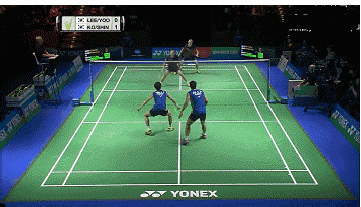
Attacking the same position in both the front and back courtsII. How to Receive Middle BallsIn doubles, the middle ball often causes trouble—either both players scramble to return it, disrupting each other, or they both give up, watching helplessly as the ball hits the ground. Earlier, we also discussed the middle ball, and the best way to handle it is the diagonal approach.Specifically: Depending on the direction of the ball, if it’s coming diagonally, the teammate positioned diagonally opposite will handle it, while the other teammate provides support. If the ball is coming straight, the teammate aligned directly in that line will take care of it.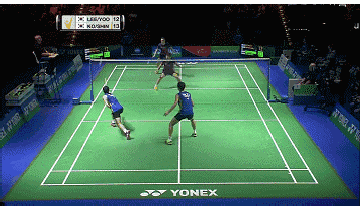
Ball coming from the left—handled by the player on the right.In doubles, teamwork between two players is essential, and proper positioning becomes especially critical. While we generally understand the basic principle—“attack from the front, defend from the sides”—there are still numerous positioning challenges that arise during actual play. For instance: During an attack, who should be in the front, and who in the back? When defending, which player takes the left position, and which the right? And how do the two players quickly switch positions when transitioning from offense to defense?First, let’s talk about positioning during an offensive play. When serving begins, the server positions themselves in the front, while the other teammate stays behind—creating a front-and-back formation. If transitioning from defense to offense, the player who will make the final hit moves to the front, with the other teammate retreating to the back. Meanwhile, if the opponent lifts a high ball during defense, players should follow the standard receiving principles: diagonally incoming balls are received diagonally, and straight balls are handled straight. In this scenario, the receiver steps back, while their partner moves forward into the attacking zone.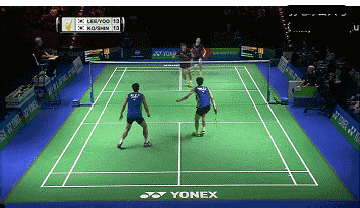
After setting the net, transition into an offensive play—while the player setting the net stays at the net, another teammate moves to the backcourt.When defending, during the serve reception, the two players immediately return to their initial defensive positions. If transitioning from offense to defense—specifically when a player lifts a high ball—the player who executed the lift steps straight back from their original position, while the other teammate smoothly shifts sideways to the opposite side.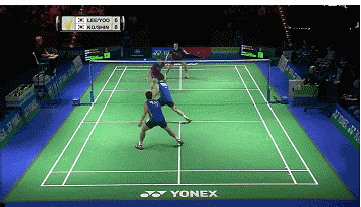
After lifting the ball, smoothly step back while your teammate moves to the other side.4. How to Receive the ChopperHave you noticed that in doubles play, players almost always use their backhand to receive smashes—why is that?First, in doubles, players generally avoid hitting the forehand sideline, as this makes it easy for the opponent to drop a soft shot into the net.Second, the smash shot has a shorter trajectory, allowing for quicker reaction time when returning the ball;Third, the reach for a backhand drop shot is greater.Why is it said that the backhand has a wider reach for defensive shots? Remember when we talked about the "chasing ball"? If the shuttlecock lands in areas like your abdomen, chest, or even along the ribs on your forehand side, a backhand can handle it—something your forehand simply can’t manage.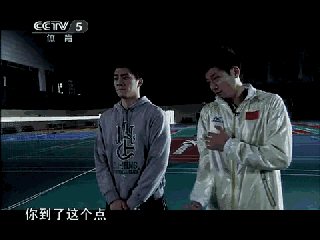
Let's take a look at the backhand kill: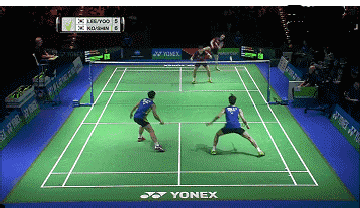
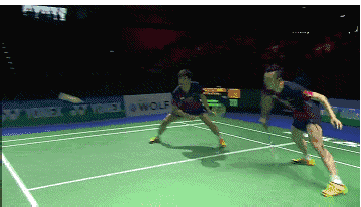
Those were a few handy tips to keep in mind during doubles play—hopefully, they’ll come in handy for you. Of course, mastering these skills will require plenty of practice and teamwork with your partner. And who knows? Before long, you might just be dominating the court like your favorite idol does!
More article recommendations:
Learn to smash from scratch—say goodbye to the frustration of jumping but still missing the shuttlecock!
Badminton netting technique GIF demonstration—helping you easily win points on the court!
Why do you always experience wrist pain when playing sports? It’s very likely that there’s an issue with your follow-through motion.
Zhao Jianhua, Yang Yang, and Li Mao have prepared over 100 lessons for everyone, covering techniques like badminton net shots, backhand cross-court hooks, and smashes. Click "Read the Original Article in the Bottom Left Corner." If you're looking to improve your badminton skills, don't miss this—your chance is right here!

Click here to access 100 lessons.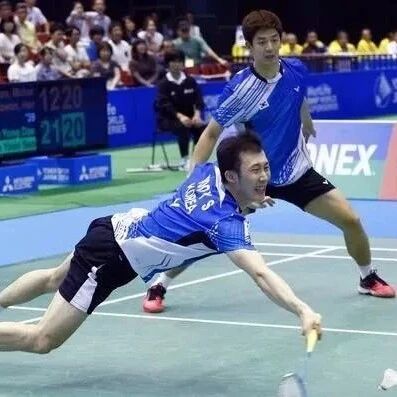




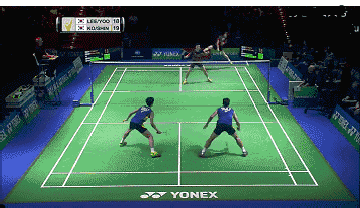






![[Badminton Grip Tape] 618 is here—time to stock up on grip tape! It’s priced at just 30% of the cost of YY brand products with the same quality.](https://api.zsiga.xyz/mp-weixin-attachment/cover/18/2650595079_1.jpg)

